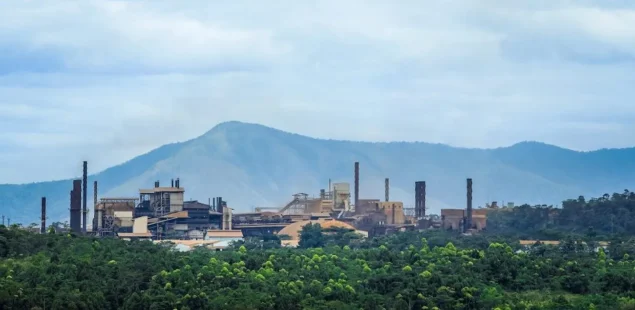
Platinum prices in recent months have been volatile, driven by a combination of industrial demand, global macroeconomic conditions, and market sentiment. Prices are currently hovering around $1,210 per ounce, rebounding from May lows caused by US dollar appreciation and weak demand from the automaker segment.
One of the leading drivers of current prices is the contrast in platinum’s two largest uses: jewellery and industrial. Whereas jewellery demand remains fairly secure, especially in China and India, weakening global vehicle production—where platinum is used in catalytic converters—has been weighing on prices. Moreover, platinum future trading confirms this skepticism, with short-term contracts having the most speculative turnover.
Further, geopolitical tensions in major platinum-producing regions like South Africa and Zimbabwe are creating supply-side pressures. These pressures are also being compounded by currency volatility (notably an appreciating dollar), and affecting near-term prices in the platinum market.
Market supply and demand dynamics
The platinum metals market right now is confronted with a dynamic of lumpy recovery in demand and supply constraints. World platinum output decreased modestly compared to a year ago due primarily to the strikes by workers and power cuts to South Africa’s platinum mines, which yield over 70% of world supply.
On the demand side, while traditional automobile uses remain significant, the emergence of battery electric vehicles (which use no platinum) is revolutionizing long-term prospects. In the meantime, novel uses of platinum in green technology, such as in hydrogen fuel cells, are a future growth driver in the pipeline although at embryonic stages.
Industrial demand, too, has been supported by the electronics and chemicals sectors. Investment demand through platinum bullion and platinum equity products has remained subdued, however, in response to competition from nickel and gold as hedging tools.
Key players in the platinum industry
The industry is dominated by a number of major mining players, most notably Anglo American Platinum, Impala Platinum, and Sibanye Stillwater. All of them have significant operations in the southern African region and are heavily exposed to the domestic socio-economic environment.
Anglo American Platinum, a subsidiary of Anglo American plc, remains the world’s largest integrated producer from mining through to refined production. It has also ventured into exploration in Zimbabwe and in digital optimisation of mines in recent times.
Impala Platinum is diversifying production by increasing palladium platinum ratios in a bid to minimize market exposure. Sibanye Stillwater, a South Africa-based mining company with operations in the U.S., is investing in green metals and research and development in a bid to contribute to hydrogen fuel technologies.
The remaining international majors, such as Northam Platinum and Platinum Group Metals Ltd., are characterized by their specialty nature and technological focus. Such producers set the prices of platinum based on their levels of production and sales.
Investment opportunities in platinum
Investing in platinum is possible in a variety of ways including physical platinum bullion, ETFs, futures, and shares in platinum mining companies. All of them possess a varied risk-return profile.
Physical platinum offers an inflation hedge and a currency deprecation hedge, similar to gold but even more volatile. Physical platinum ETFs such as the abrdn Physical Platinum Shares ETF (PPLT) offer investors a liquid entry point into physical bullion without having to handle physical bullion themselves.
The aggressive investors are offered leverage on the prices in producer stocks like Anglo American Platinum or platinum equity index-tracking ETFs. These carry operating risks in mining regions too.
Platinum future contracts on exchanges like NYMEX and TOCOM also attract short-term speculators. Short-term speculators should be aware before trading in such a market of margin requirements, rollover fees, and liquidity.
Future outlook for the platinum market
The long-term platinum demand outlook is still good even though near-term prices face pressures. Specialists are projecting a modest recovery in demand in the latter half of 2025 based on industrial and green energy usage.
The expanding market of platinum in fuel cell electric vehicles (FCEV), notably in Asia, can be a game-changer in terms of demand driver. Decarbonization and net-zero commitments can be supported by subsidy and infrastructure aid comprised of platinum-based technologies.
Supply risks are a wild card. Any major South African disruption of mines through power supply problems or political instability would send prices soaring. Added to this, the changing dynamics in the platinum stocks and those changing ESG standards could push investment into those that are front-runners in sustainability.
Technological and industrial applications
Platinum is a significant metal in numerous industries. Besides its traditional applications in platinum jewelry and automobile catalysts, it is becoming progressively significant in high-tech and energy applications.
In electronics, platinum’s conductivity and resistance to corrosion are vital in medical equipment, hard disks, and thermocouples. In the chemical industry, it is used as a catalyst for the production of nitric acid and fertilizers.
One of the future-oriented applications of platinum is in green hydrogen manufacture and fuel cell technology. PEM fuel cells, in their platinum catalyst-containing structure, form the backbone of hydrogen-powered vehicles and storage units.
As global policy pivots to decarbonization, platinum investment and trading storylines must increasingly align with ESG-driven capital inflows, which highlight the strategic importance of the metal outside of decorative application.
FAQ
Is platinum expected to go up?
Platinum prices are expected to enjoy modest price rises over the medium term based on improved industrial demand and increasing hydrogen energy uses. Near-term gains are potentially constrained by macroeconomic considerations and weak relative investor sentiment versus gold.
What is happening with platinum?
The platinum market is in a period of transformation under the stresses of falling automotive demand, geopolitically volatile supply, and competition from electric cars. In contrast, innovation in clean energy is creating new avenues of demand.
Why is platinum crashing?
The decline in recent times is largely attributed to a strengthening of the greenback, weakening automobile production, and investors redirecting their focus towards alternatives like gold and nickel. Speculative selling of future contracts and poor physical demand also contributed.
Why are platinum prices dropping?
The decline in platinum prices is the consequence of a mix of weak investment demand, overstocked inventories, and conservative buys by major industrial consumers. Near-term corrections are also being fueled by exchange rates and macroeconomic concerns.



